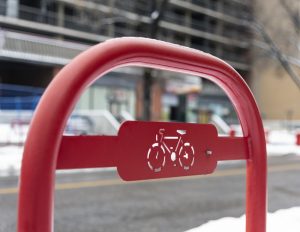
Electric bikes are accepted for use in eight provinces in Canada. These provinces include Alberta, Manitoba, British Columbia, New Brunswick, Nova Scotia, Quebec, Ontario, and Saskatchewan. However, there are a number of regulations that are peculiar to all eight provinces. In Canada, Electric bikes are generally limited to an output of 500 W. Additionally; they are not allowed to travel at speeds higher than 32km/h.
Restrictions in the ages of drivers differ from province to province. Also, while some regions do not require a license to ride an e-bike, others require one. Another factor that is common to all provinces that allow the use of e-bikes in Canada is that every driver must wear an approved helmet to prevent accidents.
It is easy to procure an electric bike in Canada. Bicycles that are deemed to be power assisted can be exported and imported without any severe restrictions like those placed on cars and other vehicles. Although they are accepted for use in several provinces, their usage is still somewhat restricted. Depending on the province, electric bikes are not allowed on specific roads, paths, lanes as well as thoroughfares. This restriction is not due to a federal ruling. It usually depends on the stance of the local municipality towards e-bikes.
Province of Ontario – Frequently Asked Questions: Electric scooters, electric bicycles & e-bikes
What are the safety and weight requirements for an e-bike in Ontario?
To better safeguard riders, e-bikes have a weight limit of 120kg. Additionally, riders have to be at least 16 years old with all passengers wearing approved helmets. Finally, modifications that allow an e-bike to exceed speeds of 32km/h are not allowed.
Can I remove my electric bike’s pedals?
No. An electric bike without pedals is no longer accepted as an electric bike according to the Highway Traffic Act. This makes your bike illegal. You could be issued a ticket for using it on government property.
Can I use my e-bike if it weighs more than 120kg?
Yes, you can still use your electric bike. However, it will no longer be considered an electric bike by law. You would have to obtain moped licensing, insurance, and registration requirements.
Can I ride an electric Bicycle with a suspended licence?
This depends on the reasons behind the suspension of your license. If your driver’s license is suspended due to a conviction that led to a driving prohibition, you can not ride an electric bike. However, if the circumstances behind your license been suspended are different, you can discuss with a licensed lawyer to examine your options.
Ontario Ministry of Transportation – Legalities of electric bicycles, electric scooters & e-bikes
In Ontario, a motorized bike is only considered to be an electric bike if it has:
- Working pedals
- Steering handlebars
- A power output that is less than or equal to 500 Watts
- Maximum speed levels of 32km/h
- A weight of 120kg or less
- A label designed by the manufacturer, stating that your electric bike conforms to federal definitions for a motorized bicycle
Additionaly for riders:
You have to be 16 years or older
You always have to wear an approved helmet
You also have to obey the same road rules as other cyclists
Other essential legalities that you need to contend with include the fact that you cant ride an electric bike:
- On specific highways controlled by provincial authorities. Some of these highways include the Queensway, the Kitchener-Waterloo Expressway, and the Queen Elizabeth way.
- On municipal sidewalks, roads, and paths where the use of bicycles is already banned by civil law.
- On public sidewalks, roads, bike trails, and bike paths where the use of electric bikes has been prohibited.
- On specific highways controlled by provincial authorities. Some of these highways include the Queensway, the Kitchener-Waterloo Expressway, and the Queen Elizabeth way.
- On municipal sidewalks, roads, and paths where the use of bicycles is already banned by civil law.
- On public sidewalks, roads, bike trails, and bike paths where the use of electric bikes has been prohibited.
Province of Ontario – Highway Traffic Act
 Electric bikes used to occupy the middle ground between bicycles and motor vehicles. However, in 2000, they were given their category by Canada’s prestigious Motor Vehicle Safety Regulations. Today, in Ontario, the Highway traffic act considers e-bikes to be completely different from other types of vehicles. They are separate and have their laws.
Electric bikes used to occupy the middle ground between bicycles and motor vehicles. However, in 2000, they were given their category by Canada’s prestigious Motor Vehicle Safety Regulations. Today, in Ontario, the Highway traffic act considers e-bikes to be completely different from other types of vehicles. They are separate and have their laws.
According to the Ontario Highway Traffic Act, you can ride an electric bike without a valid driver’s license. However, there is a specific speed limit you have to follow. Electric bike laws in Ontario states that electric bikes must not go over a speed of 32km/h. The Highway Traffic Act also states that electric bikes that have been derestricted to increase their speed limits are considered illegal.
In terms of safety, the Ontario highway traffic act state that all electrical terminals on an e-bike must be covered. This is done to reduce the risk of dangerous accidents. Usually, new electric bikes have this protective feature built in.
On the subject of specifications, the wheels of an electric bike must not be less than 35/350mm according to the Ontario Highway Traffic Act. This is the best way to make sure that these motorized bikes can withstand the rigours of use on selected roadways. Finally, riders must be able to provide a means of identification.
For more details about riding electric bikes in Ontario, please check:
Ministry of Transportation – Ontario: FAQs – Electric Bicycles
Province of Quebec – Rules for electric bicycles, electric scooters, and e-bikes
 The rules for the use of an electric bike in the province of Quebec differ slightly. The rules for power ratings of less than 500 watts still stand. In Quebec, your e-bike can have up to three wheels. Although, it must be ridden while wearing a helmet in which the law states must be made entirely of a sturdy shell and a specially padded interior.
The rules for the use of an electric bike in the province of Quebec differ slightly. The rules for power ratings of less than 500 watts still stand. In Quebec, your e-bike can have up to three wheels. Although, it must be ridden while wearing a helmet in which the law states must be made entirely of a sturdy shell and a specially padded interior.
In Quebec, the law requests that all e-bikes must bear the original label imprinted by manufactures. Also, all extra accessories that are used have to comply with the Automobile Insurance Act and the Highway Safety Code. Electric bikes can be used on all roads except highways (including their exit and access ramps). You do not need to specially register an electric bike, although there are some restrictions on licensing. Riders over the age of 18 do not require any license. However, motorists between the age of 14-17 require a Class 6D license that bears authorization to operate a scooter, e-bike or moped. The minimum age for riders in Quebec is 14.
All riders have to follow regular road rules the same as other vehicle users. Additionally, the speed limit for e-bikes in Quebec is 32km/h. This is one regulation that most of the provinces that allow the use of an e-bike on the municipal property has.
To get more information about the rules governing electric bike usage in Quebec, please visit:
Quebec: Road Safety on an Electric Bike
Province of Alberta – Highway Traffic Act
 Cycling is a prevalent leisure activity, means of transportation, and competitive sport which has shown significant growth in Alberta. Under the Alberta Traffic Safety Act, electric bikes are classified as vehicles. This means cyclists have many of the same rights and legal responsibilities as other highway users. However, there are provincial laws designed for your safety, regardless of where you ride in the province of Alberta.
Cycling is a prevalent leisure activity, means of transportation, and competitive sport which has shown significant growth in Alberta. Under the Alberta Traffic Safety Act, electric bikes are classified as vehicles. This means cyclists have many of the same rights and legal responsibilities as other highway users. However, there are provincial laws designed for your safety, regardless of where you ride in the province of Alberta.
According to the Alberta Traffic Act, you can ride an electric bike without a valid driver’s license. However, there is a specific speed limit you have to follow. Electric bike laws in Alberta also state that electric bikes must not go over a speed of 32km/h.
The current Alberta Traffic Safety Act (TSA) provides regulations specific to cyclists on the road and how motorists interact with cyclists. Nevertheless, the TSA regulations are improving based on current best practices and evidence-based research on providing the safest environment. Also, the Alberta Cycling Coalition was formed through the partnership of several of Alberta’s top cycling organizations with the mandate to improve cycling safety in Alberta. As part of this mandate, the ACC has reviewed the TSA as it relates to cycling.
In Alberta, the law specifies safe passing distances like those implemented in other cities and provinces in Canada – such as Quebec, Ontario, and Nova Scotia among others. Also, an electric bike helmet must be worn by all cyclists and passengers under the age of 18. Additionally, all bicycles in Alberta must have at least one working brake, a bell or horn; for easy communication among highway users.
Source
http://www.qp.alberta.ca/documents/Acts/t06.pdf
http://www.qp.alberta.ca/documents/Regs/2002_304.pdf
https://ebikebc.com/ebike-regulations-in-alberta/
Province of British Columbia – Highway Traffic Act
 In British Columbia, electric bikes are classified as vehicles electrically powered with a pedal-assisted system. In 2002, the British Columbia government adopted Section 1.2.1 of the Canada Motor Vehicle Safety Act (CMVSA). Therefore, becoming the first province in Canada to authorize the use of electric bikes on the highway legally.
In British Columbia, electric bikes are classified as vehicles electrically powered with a pedal-assisted system. In 2002, the British Columbia government adopted Section 1.2.1 of the Canada Motor Vehicle Safety Act (CMVSA). Therefore, becoming the first province in Canada to authorize the use of electric bikes on the highway legally.
In British Columbia, e-bikes are classified into three (3) different classes and each class has different traffic rules distinguishing it from the other. The regulations state that those with Class 1 e-bikes can ride on any park trails where mountain bikes or other cycling is already allowed. However, those with Class 2 and 3 e-bikes can only ride on trails and roads designated for motorized vehicles.
Also, Class 1 e-bikes are not considered motor vehicles under the Park, Conservancy and Recreation Area (PCRA) regulations. These types of e-bikes have motors that are only put to work when the cyclist is pedalling at an output of 500 watts. However, the motors of Class 2 and 3 e-bikes are capable of providing partial or full assistance by a throttle. Furthermore, both classes are considered motorized vehicles under PCRA regulations.
Also, electric bicycles must have fully operable pedals, which means the engine must disengage when the operator stops pedalling. However, they are allowed to have an accelerator controller. Additionally, to use your e-bike on the highway, neither a driver’s license, insurance, or vehicle registration is required. However, you must wear a bicycle helmet before riding on the road.
Source
https://ebikebc.com/ebike-regulations-in-british-columbia/
https://www.cbc.ca/news/canada/british-columbia/bc-parks-ebike-policy-1.5262734
Labrador – Electric bike rules and regulation
 The rules for the use of an electric bike in Labrador is quite different from others. However, the rules for e-bike power ratings still stand at less than 500 watts. In Labrador, your e-bike can have up to three wheels. Also, you must use a helmet when riding an electric bike in Labrador.
The rules for the use of an electric bike in Labrador is quite different from others. However, the rules for e-bike power ratings still stand at less than 500 watts. In Labrador, your e-bike can have up to three wheels. Also, you must use a helmet when riding an electric bike in Labrador.
Also, an electric bike or scooter, when in motion on a highway later than one-half hour before sunset and earlier than one-half hour after sunrise, must be equipped with a lamp. This lamp casts a white light on the road in front for maximum visibility. Also, it is imperative to have a red lamp fastened at the rear so as to be visible from the back. In Labrador, you’re required to attach a reflector on your e-bike. These reflectors should be placed in a way that they reflect the headlights of vehicles approaching from the rear-end.
Also, the law states that every electric bike owner over the age of 18 does not require any license. However, cyclists between the ages of 14-17 need a permit that bears authorization to operate a scooter, e-bike or moped.
All riders have to follow standard road rules the same as other vehicle users. Furthermore, the speed limit for e-bikes in Labrador is 32km/h. This is one regulation common among most of the provinces that allow the use of an electric bike in Canada. Also, the province legislation states that the number of person(s) on a bicycle should be limited to the design and equipment specifications by the manufacturer.
Sources
https://ebikebc.com/ebike-regulations-in-new-foundland-and-labrador/
https://www.releases.gov.nl.ca/releases/2018/servicenl/1121n04.aspx
https://www.canlii.org/en/nl/laws/regu/
https://www.arnnl.ca/sites/default/files/documents/PP_Mandatory_Bicycle_Helmet_Use_in_NL.pdf
Province of Manitoba – Highway Traffic Act
 In Manitoba, electric bikes legislation is a little distinct from other provinces in the country. E-bikes are categorized as a moped vehicle, or a scooter, based on the amount of power produced by the engine and its maximum speed.
In Manitoba, electric bikes legislation is a little distinct from other provinces in the country. E-bikes are categorized as a moped vehicle, or a scooter, based on the amount of power produced by the engine and its maximum speed.
If the engine on your electric bike is less than 50cc and cannot exceed 50 km/h then, you’re not required to have a motorcycle license or permit. However, if you are required to have a driver’s license, you must be at least sixteen (16) years old.
Also, when riding a power-assisted bicycle, you’re mandated to wear a helmet. The law explicitly states that nobody can operate or ride a power-assisted bicycle on a highway or a designated bicycle facility without a properly fitted protective helmet.
In Manitoba, the legislation has a minimum operator age for power-assisted bikes. The rules governing the operation of electric bikes state that an operator of a power-assisted bicycle must be 14 years of age or older.
As an electric bike rider, the regulations state that you should use hand signals to communicate when stopping and turning. It is essential that you communicate all actions to motorists and ensure your intentions are predictable and visible. Cyclists and motorists are also enjoined to share the road with respect, courtesy and caution. Cyclists should ride as close to the curb as practicable.
The Act also has a provision that guides the position of electric bike riders on the road. Riders on an electric bike must operate it very close to the right-hand curb. This is the rule unless the road is designated for one-way traffic or has multiple lanes.
Click here to find out more about e-bike rider rules in Manitoba.
Sources
https://ebikebc.com/ebike-regulations-in-manitoba/
https://web2.gov.mb.ca/laws/statutes/ccsm/h060e.php
https://morethanbikes.ca/ebike-laws/
https://greenactioncentre.ca/healthy-travel/sidewalk-cycling-an-option-for-people-on-bikes/
Province of New Brunswick – Electric bike rules and regulations
 In New Brunswick, it is essential that every e-bike rider follows the federal guidelines and rules. However, there are unique differences in the rules compared to other provinces. In New Brunswick, an electric bike must not have an electric motor that is more powerful than 500 watts. Also, electric bike riders in New Brunswick must not travel faster than 32km/h.
In New Brunswick, it is essential that every e-bike rider follows the federal guidelines and rules. However, there are unique differences in the rules compared to other provinces. In New Brunswick, an electric bike must not have an electric motor that is more powerful than 500 watts. Also, electric bike riders in New Brunswick must not travel faster than 32km/h.
There is more to the rules governing the use of electric bikes in this province. For instance, the engine of the bicycle must stop running when the operator stops pedalling. This means electric bikes must have completely operable pedals. However, they are allowed to have an accelerator controller. Additionally, the wheel rims of the bicycle must be larger than 22 cm with the seat at least 68 cm away from the ground. Also, the New Brunswick Highway Traffic Act requires you to use a headlight for visibility when driving under dark conditions.
In this province, all e-bike and electric scooter users have the same rights as drivers of other vehicles. However, every e-bike rider must use a regular attached seat while on New Brunswick roads. This means the number of the person(s) on a bicycle on New Brunswick roads are limited to the actual number it was designed for.
Finally, electric bikes must be equipped with approved forward-facing white colour lights as well as a rear-facing red reflector/light for night time use on roads. A rear-facing approved red light may be used with a red reflector.
Sources
https://ebikebc.com/ebike-regulations-in-new-brunswick/
Province of Newfoundland – Highway Traffic Act
 In Newfoundland, e-bikes and motor-assisted bikes are classified similarly to conventional pedal bikes. The motor vehicle act describes a power-assisted e-bike or scooter as a bicycle with a motor of fewer than 500 watts. Some with two wheels – one of which is at least 350 mm while some have four wheels, two of which are at least 350mm.
In Newfoundland, e-bikes and motor-assisted bikes are classified similarly to conventional pedal bikes. The motor vehicle act describes a power-assisted e-bike or scooter as a bicycle with a motor of fewer than 500 watts. Some with two wheels – one of which is at least 350 mm while some have four wheels, two of which are at least 350mm.
According to the Newfoundland legislation, you can ride an electric bike without registration and a driver’s license. Nevertheless, there is a certain speed limit you have to follow to avoid being fined. Electric bike laws in Newfoundland province state that electric bikes must not go over a speed of 32km/h. The Highway Traffic Act also states that electric bikes that have been restricted to increase their speed limits are considered illegal.
In terms of safety, the Newfoundland highway traffic act proposed a one-metered rule for every electric bike and scooter in the province. This rule is aimed at the protection of cyclists and pedestrians. The law means a driver of a motor vehicle is required to leave at least one meter of open space between the vehicle and bicycle. The driver is also required to give a one-metered spacing between the pedestrian on highways and the vehicles, and finally a specific speed limit of 60 kilometres per hour at maximum.
Furthermore, a new definition of the pedestrian Act has also been put in place, directly addressing persons with disabilities. The penalty for violations of the one-meter rule will range between $100-$400, or two-14 days imprisonment, as well as two demerit points which will be incorporated in the regulations.
Click here to find out more about electric bike rules and regulations in Newfoundland.
Sources
https://ebikebc.com/ebike-regulations-in-new-foundland-and-labrador/
https://www.releases.gov.nl.ca/releases/2018/servicenl/1121n04.aspx
https://www.canlii.org/en/nl/laws/regu/
https://www.arnnl.ca/sites/default/files/documents/PP_Mandatory_Bicycle_Helmet_Use_in_NL.pdf
Province of Nova Scotia – Electric bike rules and regulations
 Electric bikes are typically known as regular conventional bikes in most provinces in Canada. In Nova Scotia, it is described as an electrically motor-powered bike with a power output of 500 watts or less.
Electric bikes are typically known as regular conventional bikes in most provinces in Canada. In Nova Scotia, it is described as an electrically motor-powered bike with a power output of 500 watts or less.
Electric bikes are legally allowed on the highway so far you have the designated helmet for e-bikes with a completely working chinstrap. Also, electric bikes are not mandated to meet the stipulated requirements for motorcycles as stated in the Canadian Motor Vehicle Safety Regulations. This is because they are not classified as motor vehicles. However, as a rider, you have to abide by the general federal rules and regulations binding electric bikes and scooters.
Other general rules binding the use of an electric bike in this province insist that a cyclist must always ride on the right-hand side of the road. This is to enable the rider to maintain the traffic flow and remain as near as feasible to the curb. Additionally, you should always keep your distance from the road edges – at least one meter away from the edges. However, this depends on your destination, speed of traffic, and road edge/width.
In addition, you can take the whole lane while making a left-turn, or while riding around a roundabout. This is in a bid to ensure the safety of lives and properties while on the highway. It is imperative that you ride in a straight, predictable path. Do not weave around parked cars, stay one meter away from parked cars to avoid door zones, and use the lane as needed to perform turning maneuvers or to avoid road hazards.
Click here to find out more about electric bike rules in Nova Scotia.
Sources
https://ebikebc.com/ebike-regulations-in-nova-scotia/
Province of Prince Edward Island – Highway Traffic Act
 Electric bikes are classified as limited-speed motorcycles under the Highway Traffic Act in the province of Prince Edward Island. These types of bikes are considered a moped under the regulations of the Highway Traffic Act. An authentic driver’s license is needed to be able to operate an E-bike in Prince Edward Island because of their unique classification. Also, there are a lot of rules and regulations around them. For instance, an e-bike must be registered, and riders need a license before they can ride on the highway. Also, you must be at least 16 years old with a fully kitted helmet to be able to drive in the province.
Electric bikes are classified as limited-speed motorcycles under the Highway Traffic Act in the province of Prince Edward Island. These types of bikes are considered a moped under the regulations of the Highway Traffic Act. An authentic driver’s license is needed to be able to operate an E-bike in Prince Edward Island because of their unique classification. Also, there are a lot of rules and regulations around them. For instance, an e-bike must be registered, and riders need a license before they can ride on the highway. Also, you must be at least 16 years old with a fully kitted helmet to be able to drive in the province.
As a cyclist, you should always make hand signals before making a turn on the road. Also, the rules and regulations in this province state that you should always look over your shoulder while switching lanes to avoid an accident.
While it might be nice to ride alongside a friend when going for a bike ride, it’s stated in the provincial highway traffic act that riders should always ride in a single file. Additionally, the Highway Traffic Act requires e-bikes used at night to be equipped with a white light in the front and a red light in the back. Also, it is recommended that you wear reflective clothing for easy visibility at night.
The essential thing is to see and be seen. This is as a factor of safety for electric bike owners knowing fully well that they are more vulnerable than motorists. Finally, the government mandates that you must keep both hands on the handlebars at all times except when signalling.
Sources
https://ebikebc.com/ebike-regulations-in-pei/
https://www.cbc.ca/news/canada/prince-edward-island/pei-road-rules-cycling-1.4632875/
http://www.gov.pe.ca/photos/original/tpw_dh_chap6.pdf/
City of Ottawa – Ottawa City Cycling Plan
 The city of Ottawa is completely committed to integrating electric bike riders into its community. It is a city that believes in the long term health and social benefits of cycling, especially when it comes to electric bikes.
The city of Ottawa is completely committed to integrating electric bike riders into its community. It is a city that believes in the long term health and social benefits of cycling, especially when it comes to electric bikes.
In 2013, the Ottawa City Cycling Plan was thought up and implemented. The 2013 Ottawa Cycling Plan was devised as a long-term strategic plan to strengthen and improve the state of cycling in the city. The latest cycling plan is an update to a similar initiative that was thought up in 2008. This current plan was developed to build a socially conscious Ottawa, that promoted the ideals of cycling and the use of e-bikes.
The Ottawa City plan involved upgrades to the city’s transportation plan and routes, pedestrian plan and the provision of infrastructure geared at making sure that users of e-bikes and other bicycles can enjoy cycling. A complete look at the policy as well as cycling networks and maps can be found online using the GeoOttawa mapping tool.
To check more details of the Ottawa City Cycling Plan, please visit:
Ottawa City Cycling Plan
City of Montreal Police Services – Power Assisted Bicycles
 In Montreal, electric bikes are described as vehicles with a pedal system that are powered exclusively by electricity. To drive an electric bike in Montreal, you have to be over the age of 18. Alternatively, you have to hold at least a Class 6D driver’s license.
In Montreal, electric bikes are described as vehicles with a pedal system that are powered exclusively by electricity. To drive an electric bike in Montreal, you have to be over the age of 18. Alternatively, you have to hold at least a Class 6D driver’s license.
Also, electric bikes in Montreal have to be equipped with pedals, must be able to be propelled by human energy and must have a power output of less than or equal to 500W. This also means that the electric bike must have a speed limit of 32km/h on even ground. Electric bikes that have been tweaked to deliver speeds of over 32km/h are considered to be illegal.
Safety is important to the city of Montreal. That is why authorities have determined that electric bikes must have:
- An enabling mechanism that is designed to turn on the electric motor. This mechanism must be different from the e-bike accelerator and must be fitted to be easily operable by the rider.
- A safety mechanism that prevents the electric motor from working before the e-bike reaches speeds of 3km/h
Related article: How an Electric Bike Works?
For more information on power-assisted bicycle rules and regulations as determined by the city of Montreal Police Services visit:
SPVM: Power Assisted Bicycle
City of Calgary – Electric bike rules and regulations
Electric bikes are rapidly growing in popularity in cities across the breadth of Canada. In Calgary, electric bikes are legal on city pathways if you’re using pedelec or pedal-assisting technology.
For the most part, Calgarians have to follow the same rules as vehicles when commuting — except they can use bike lanes, where available. Also, the city requires cyclists to have a bell attached to the bike and at least one working brake. When riding in the dark, cyclists must also have lights and a rear reflector.
As an e-biker in Calgary, you can face a handful of fines if you fail to follow traffic rules for all vehicles. According to city bylaws, you can be fined $100 for failing to yield before entering a roadway, sidewalk or pathway. There is also a $100 ticket for operating your e-bike on Deerfoot Trail.
Additionally, all e-bike users are required to wear helmets, either motorcycle or bicycle helmets, once they are on the highway. Also, cyclists must yield to pedestrians and obey all traffic rules and regulations as they ride on roads, pathways and in designated bike lanes. In Vancouver, it is illegal to ride e-bikes on sidewalks, and those who do so can be fined.
The golden rule for riding any electric vehicle is ensuring pedestrians have the right of way. There are also some safety rules for electric bikes applicable to electric bikes owners in Calgary. For instance, the law states that a rider should be predictable. It also enjoined riders to watch out for cars entering and exiting driveways and alleys – and ensure to avoid car doors.
You can find out more details about the rules and regulations guiding e-bike users in Calgary. Click here to find out more.
Sources
https://www.calgary.ca/CSPS/Parks/Pages/Pathways/Electric-Bikes.aspx
City of Edmonton – Electric bike rules and regulations
The Edmonton area is home to a massive variety of flora and fauna, natural vistas and incredible places to explore – a haven for e-bike riders. While the city itself is an adventure all its own, the wilderness around it is what makes it unique.
However, there are specific rules and regulations governing the use of e-bikes on major roads. Understanding how these rules work will help you enjoy your ride as well as keep you safe on the highway.
In Edmonton, an e-bike is a power-assisted bicycle, as described in subsection 2(1) of the Motor Vehicle Safety Regulations. Also, electric bikes that have been adjusted to deliver a speed of more than 32km/h are considered to be illegal. Contravening this rule may warrant a fine.
Safety is essential to the city of Edmonton. That is why all cyclists below the age of 18 are required by law to have a safety helmet. This rule is also applicable to passengers. E-bike helmets must abide by the rules put out in the Edmonton regulations.
Also, a person should only ride an e-bike at night if the e-bike possesses the following:
● At least one red backlight
● At least one red reflector attached to the back of the bike
● At least two headlights.
In Edmonton, it is vital that you do not ride a bicycle unless the bicycle has a brake. The law also states that it is illegal to ride an e-bike on any sidewalk unless it has a diameter of 50 centimetres or less. However, this law does not apply to designated bicycle paths or shared pathways.
Source
https://edmonton.citynews.ca/2019/02/11/proposed-law-aims-to-improve-cyclist-safety-in-alberta/
https://www.edmonton.ca/transportation/cycling_walking/bike-electric-scooter-sharing.aspx
City of Halifax – Cycling city plan
Halifax city is home to a growing network of bikeways, sidewalks, and multi-use pathways. This makes it easier, safer, and more comfortable to walk and cycle in the city. Cycling and walking are part of the suite of transportation options provided by Halifax Regional Municipality.
E-bikes, in particular, are encouraged for use in Halifax. Incorporating the use of e-bikes in commuting to work or running errands has yielded benefits for users. These benefits include;
- Getting your regular necessary exercise without having to pay for gym registration
- Arriving at your destination, feeling more energetic and happier
- Reducing your environmental footprint
- Experiencing your community in a new way.
Furthermore, the latest cycling plan is an update to a similar initiative that was thought up a few years ago. This current plan was structured to build a socially fitting Halifax, that promoted the use of e-bikes and cycling ideas.
The Halifax City cycling plan consists of upgrades to the city’s transportation plan and routes, sidewalks, and the provision of infrastructure. All of these are geared at ensuring that e-bike users and other bicycles can enjoy cycling.
Also, there is a new on-going project targeted at cyclists. This project is part of Halifax’s Regional Centre AAA Cycling Network and is targeted at making it more comfortable and convenient for you to get around Halifax with your e-bike. The newly-upgraded bicycle lanes feature physical separation between people cycling and traffic, along with new features on the street such as two-stage turn boxes and shared bike lane-bus stops.
City of London – Cycling city plan
Londoners have always supported cycling. Over time, the city has emerged as bike-friendly through the implementation of cycling infrastructure, policies and promotional initiatives. It is a city that has enjoyed successes in the acceptance of e-bike riders. These successes include both hard and soft infrastructure conceptualized over the past 14 years – since the acceptance of the City’s first Cycling City Master Plan in 2005.
Policies and plans that support cycling are found at all levels of government. At the provincial level, the Provincial Policy Statement and the province’s Action Plans provide policy guidance and support for cycling route development. In London, the first extensive policy document identifying a long-term strategy to improve cycling was the 2005 Bike Master Plan.
The Bicycle Master Plan Implementation Strategy complimented the master plan in 2007 and the Parks and Recreation Master Plan. Understanding the policies that support cycling as well as strategies that may need to be updated to reflect new principles and priorities was an essential step in the master planning process.
Also, cycling rules are defined by both provincial and municipal governments. These are in place to ensure all road users stay safe.
Furthermore, more and more people are choosing cycling as their preferred way to get around. With the number of cyclists in London on the rise, it’s the city’s role to help create a cycling-friendly future through the education of motorists, cyclists and pedestrians about the rules of the road.
Sources
http://www.london.ca/residents/Roads-Transportation/cycling/Pages/Sidewalk-Cycling-.aspx
City of Vancouver – electric bike and scooter rules and regulations
In Vancouver, a motor-assisted cycle is defined as a two or three-wheeled cycle with an electric motor, pedals and a seat. It does not require registration, vehicle licence or insurance. Although the rider doesn’t require a driver’s licence, he/she must be 16 years of age and above.
Operating an electric bike in Vancouver is a pretty straightforward process. You are eligible to ride your e-bike on any road just like other vehicles. This freedom may be restricted where municipal by-laws restrain operation.
Your bike’s motor system must be electric with a total combined output of not more than 500 watts. Additionally, it should be incapable of propelling the cycle at speeds greater than 32 km/h on level ground without pedalling.
The continuous adoption of electric bikes and scooters in the modern world is on the rise daily. With this in mind, the city of Vancouver has also put in place the rules and regulations binding the use of these electrically motor-powered vehicles. In Vancouver, electric bikes enjoy all of the rights possessed by other vehicles.
However, the city constrains the use of motorized hoverboards, scooters and skateboards. Also, park paths are in place to reserve this space for active modes such as walking and cycling without conflicting with motorized vehicles.
Additionally, there are concerns related to the potential for people to lose control while operating low-powered vehicles. This is why it is stated that no rider must drive on a sidewalk, boulevard, or walkway, except when entering or leaving a driveway or lane.
Click here to find out more about riding electric bikes in Vancouver.
Sources
https://theprovince.com/opinion/op-ed/steve-miloshev-regulation-for-use-of-electric-cycles-is-needed
Quebec city – Electric bike rules and regulation
E-bikes in Quebec city are required to have a compliance label attached to identify the manufacturer. Also, electric-assist bikes are permitted on the road in Quebec. However, the minimum age requirement for rider eligibility is 14 years of age. In addition, for riders below 18 years of age, a scooter or moped license is a mandatory requirement.
Electric bikes, usually grouped as a type of power-assisted cycles, are equipped with an electrically powered system. The motor system is usually less than 500 watts with a rechargeable battery. When the electric motor is idle, the bike must allow the rider to pedal like a regular bike with pedals and 2 or 3 wheels touching the ground.
Also, in Quebec, you must ride as far to the right curb or edge of the highway unless making a left-side turn. When riding on a one-way road in an urban area, you may operate as near as feasible to either curb or edge of the roadway.
In Quebec, you do not need to particularly register your electric bike, although there are some restrictions on licensing. However, operating a bike equipped with a combustion engine – such as a gasoline engine on the road network for bikeways is prohibited.
In addition, the rule states that electric bike accessories must comply with the Automobile Insurance Act and the Highway Safety Code. This is particularly with respect to e-bike reflectors.
There are other regulations that cover biking lanes and roads you can ride on. Click here to find out more.
Source
https://ebikebc.com/ebike-regulations-in-quebec/

 Classification of electric scooters, electric bicycles, e-bikes, moped, and motor scooters:
Classification of electric scooters, electric bicycles, e-bikes, moped, and motor scooters:

















